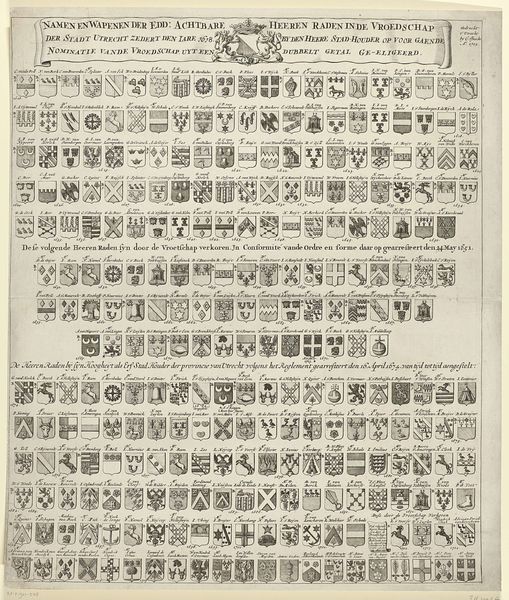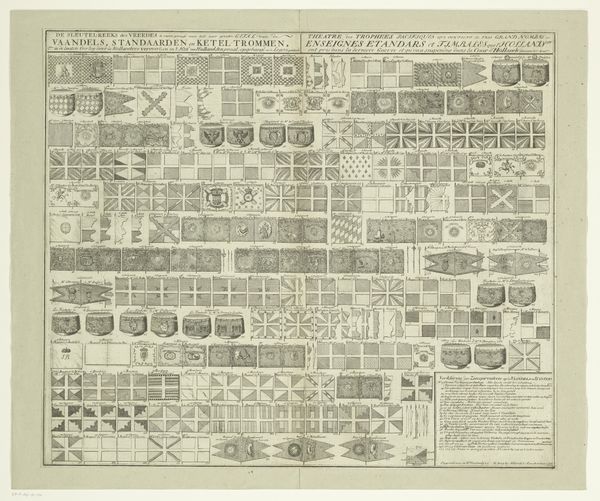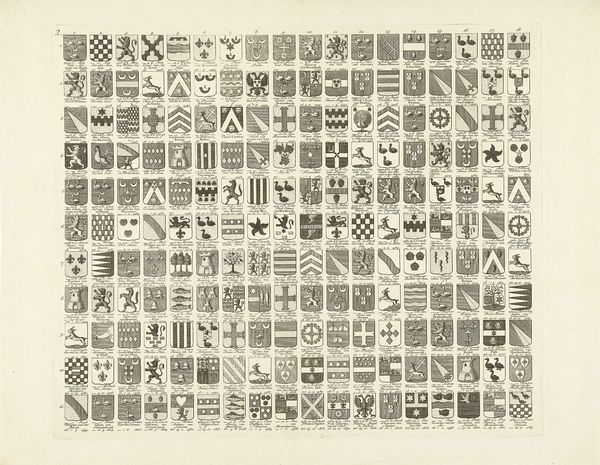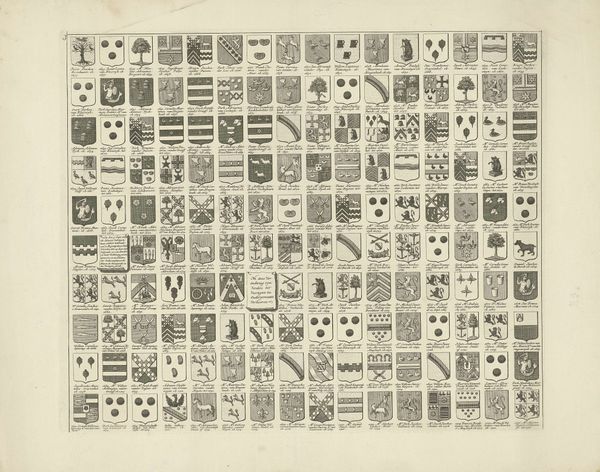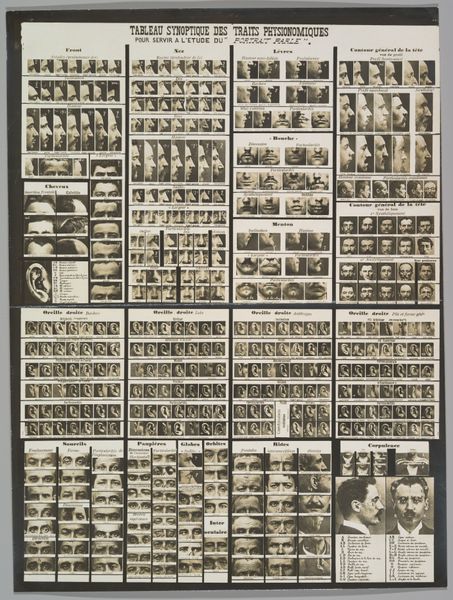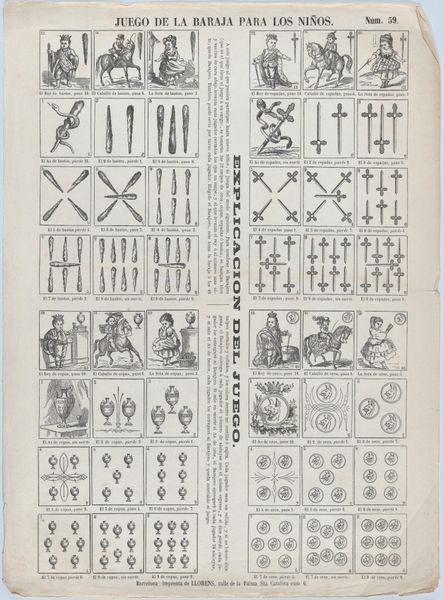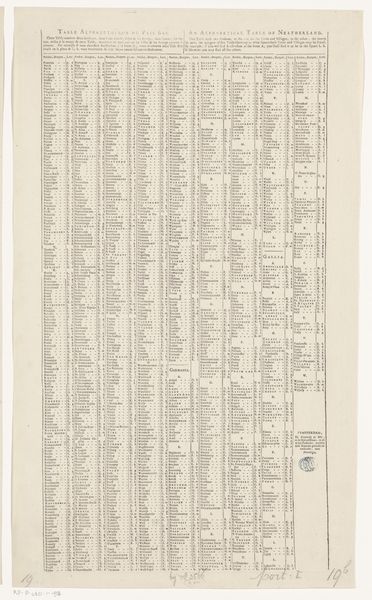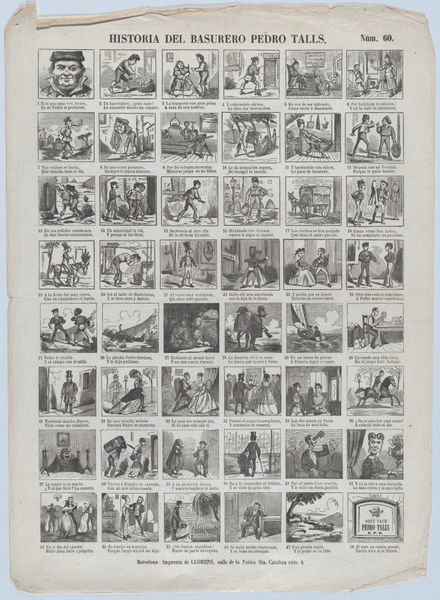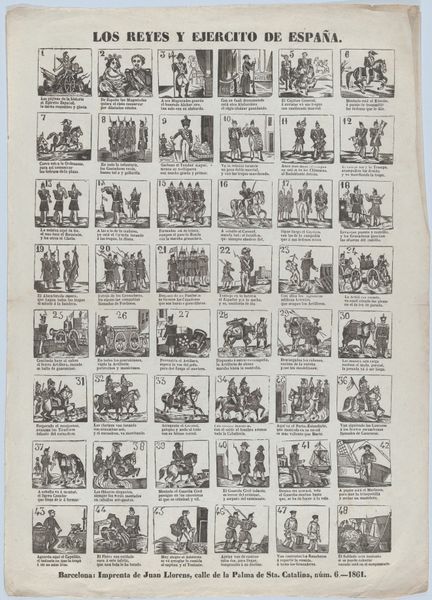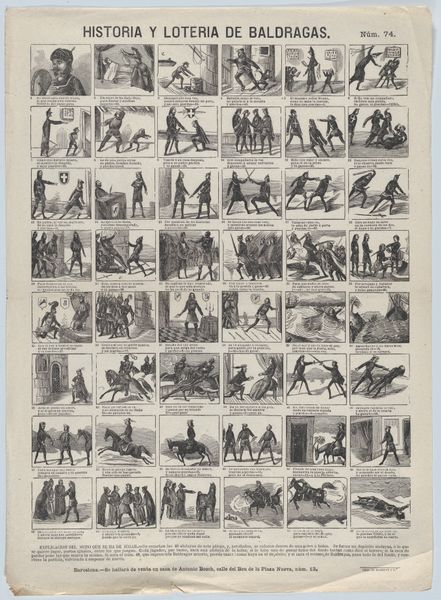
Wapenen der Weledele Heeren Hoog-Bailliuwen, Opper-Dykgraaven, Hoog-Heemraaden, Secretarissen & Penning-Meesteren van Delfsland 1756
0:00
0:00
graphic-art, print, engraving
#
graphic-art
#
baroque
# print
#
history-painting
#
engraving
Dimensions: height 665 mm, width 530 mm
Copyright: Rijks Museum: Open Domain
Curator: What strikes me first is the sheer density of this piece. Row upon row of heraldic shields. Editor: It feels like a catalog, almost bureaucratic. Are we looking at a collection of official seals? Curator: In a way, yes. This print, created around 1756 by J. Reeland, is entitled "Wapenen der Weledele Heeren Hoog-Bailliuwen, Opper-Dykgraaven, Hoog-Heemraaden, Secretarissen & Penning-Meesteren van Delfsland," or, loosely translated, "The Arms of the Honorable Lords High-Bailiffs, Upper-Dike Reeves, High-Councilors, Secretaries & Treasurers of Delfland." It’s a veritable who's who of the Delfland water board in the Dutch Republic during the 18th century. Editor: Ah, Delfland. A region wrestling with water management. Suddenly, those precise, orderly rows gain resonance. These aren't just symbols of lineage; they're emblems of responsibility, tied to controlling the landscape. Is that an accurate assessment? Curator: Absolutely. Consider the era. The Dutch Republic's Golden Age had peaked, but the intricate systems of dikes and waterways still demanded careful oversight. These shields represented individuals entrusted with maintaining that critical infrastructure, mediating between land, water, and community. It really speaks to how a particular moment creates certain symbology in heraldry. Editor: And that system of inherited or appointed positions inevitably led to power structures—and potential imbalances? I can’t help but think of those whose labor and lives were impacted. Where are *their* symbols represented? It is not just about control over territory and administration, but it is equally about privilege. It brings into question how the socio-economic and labor force could claim more autonomy from their leaders, no? Curator: A valid point, the engraving certainly favors the established elite. The blank heraldic outlines could potentially signify unoccupied positions but they also, powerfully, symbolize exclusion from the institutions and practices in the country’s system. This allows the print to create an eerie visualization of absence alongside such overwhelming, hierarchical presence. Editor: Despite its somewhat sterile appearance, the print inadvertently tells a larger, complex narrative about societal power, access, and exclusion. It pushes me to explore how such forms of visual record can better document full spectrums of political history. Curator: Indeed, looking closely reveals hidden dimensions. It serves as a valuable snapshot into the visual vocabulary of authority during the Dutch Golden Age.
Comments
No comments
Be the first to comment and join the conversation on the ultimate creative platform.
